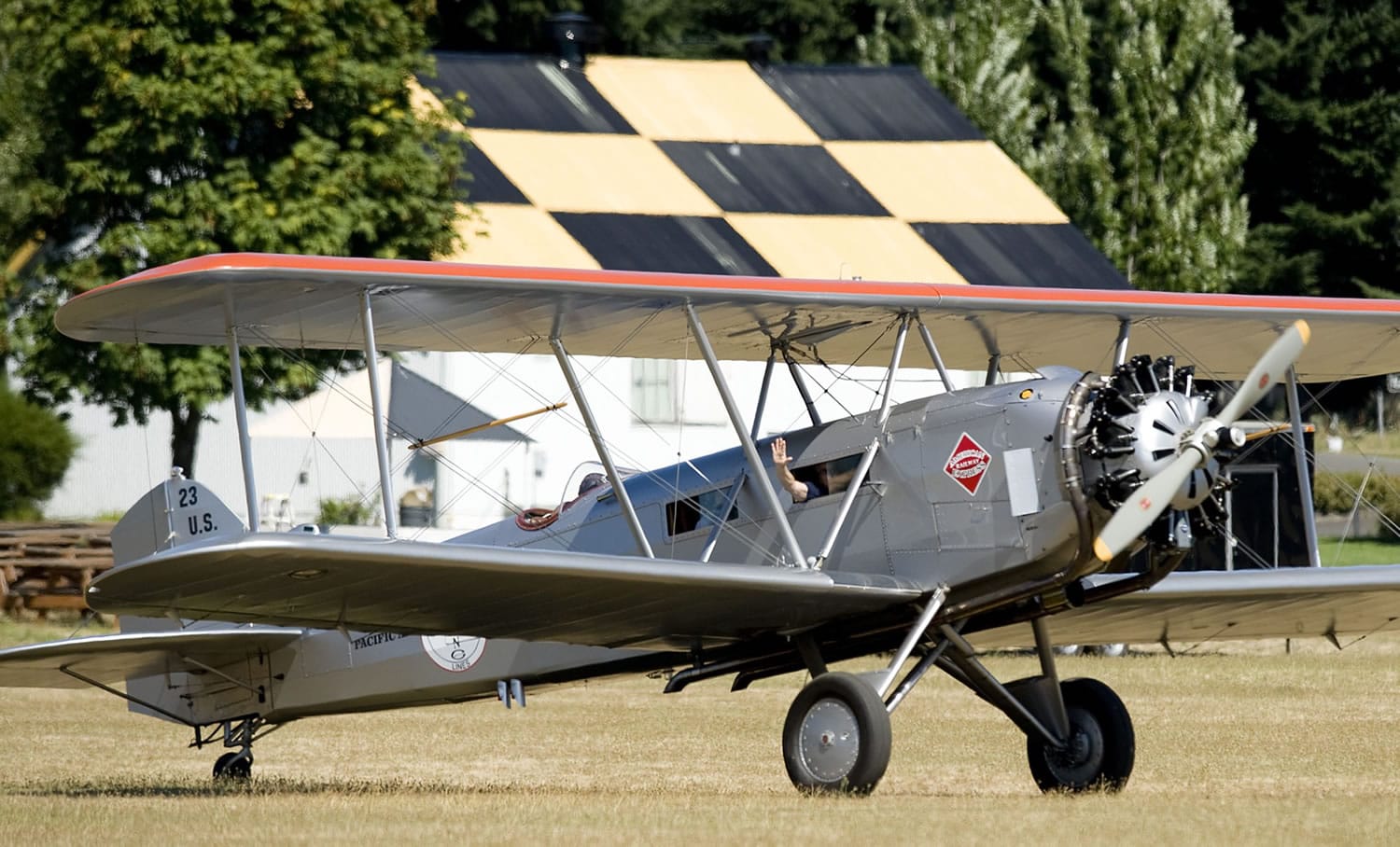To see more pictures and read more about the Boeing 40C, visit: pembertonandsons.com.
When Addison Pemberton fires up the engine of his restored 1920s Boeing 40C, he’s bringing to life the famed Washington company’s first commercial plane model.
When he lifts off the ground, he’s taking the only remaining plane of its kind to the skies, flying a plane reborn from wreckage found on a mountainside near Canyonville, Ore. And when he clears most signs of civilization, he’s also heading straight back into history.
“You can transport yourself back to that time,” Pemberton, 57, said Saturday as he prepared to lift off from Pearson Field in Vancouver, the plane’s first visit there in 83 years. “When you get out of Portland, it’s 1928. The rivers, mountains and valleys — those haven’t changed.”
Pemberton, a commercial pilot based in Spokane, has restored 19 planes. But it was clear that the silver Boeing with the red top wing and mahogany interior was special.
The plane — which visited the airfield as part of Saturday’s Open Cockpit Day — is the oldest Boeing in existence.
Pemberton spent 20 years hunting the wreckage of the Boeing 40C, which crashed into the side of a mountain near Canyonville on Oct. 2, 1928, on a foggy day. The lone passenger died; the pilot survived with burns to his face and body, crawling semiconscious to a highway 100 yards from the crash site for help.
The plane itself was lost for years until the Oregon Aviation Historical Society recovered it in 2000. Pemberton said he snapped up the rights to salvage the piece of history, and he got them — on the condition that he share it with the public.
“It represents the missing link between barnstorming and commercial aviation,” he said.
The pilot declined to say how much went into rebuilding the rusted and twisted metal found in Southern Oregon into the gleaming machine that sat on the hot runway Saturday, only to say that it cost more than one would imagine. Flying the plane alone runs about $300 an hour, he said.
Pemberton and family members working on the restoration were able to use 50 original parts, including the data plate — the original “fingerprint” of a plane, like a car’s Vehicle Identification Number — which means it’s not a replica.
“It’s not the wings or the engine,” Pemberton said. “The data plate is the heart.”
On Saturday, fliers and flight enthusiasts of all ages snapped pictures and let out gasps as the Boeing took flight. Its trip from Spokane was sponsored by the Airliners International Convention, which was holding its annual convention at the Red Lion on Jantzen Beach, and 10 raffle winners got 20-minute rides Saturday afternoon.
That very Boeing 40C and the company that operated it, Pacific Air Transport, flew out of Pearson regularly in the 1920s, so it was natural to bring it back, convention organizer Jay Prall said.
“This aircraft represents the earliest history of commercial aviation,” Prall said. “It was a logical step to bring this plane to Pearson — it is home turf.”
As Pemberton buzzed above the airfield, fellow antique plane collector Patrick Garrison stood in awe of the craft. He brought along his replica of the Red Baron’s World War I Fokker Dr1 triplane, along with an old British plane, to join Saturday’s show.
His own family’s planes have been stolen and returned several times over their long history, often returned in states of damage and neglect. Yet he said he’s committed to restoring them once again and bringing them to share at events like Open Cockpit Day.
“Right now, you look at those things, they look like toys,” Garrison said. “At the time they were cutting-edge, flying stunts and firing hot metal at each other. That’s where aviation was born. It’s important to remember that.”
He said he’s seen people tear up as they approach his planes from time to time, and everyone always wants to touch a wing.
“It’s worth it,” he said. “There’s been a lot of happy faces.”
Andrea Damewood: 360-735-4542 or http://www.facebook.com/reporterdamewood or http://www.twitter.com/col_cityhall or andrea.damewood@columbian.com.



